The Independent's journalism is supported by our readers. When you purchase through links on our site, we may earn commission.
Anchovy liquor, baby octopus and feasting with chefs: What they didn’t tell you about the Amalfi coast
Slow travel allows you to soak up all the places you usually fly over, writes Emily Clark, as she catches the bus to Italy on a low-carbon adventure with high-class eats

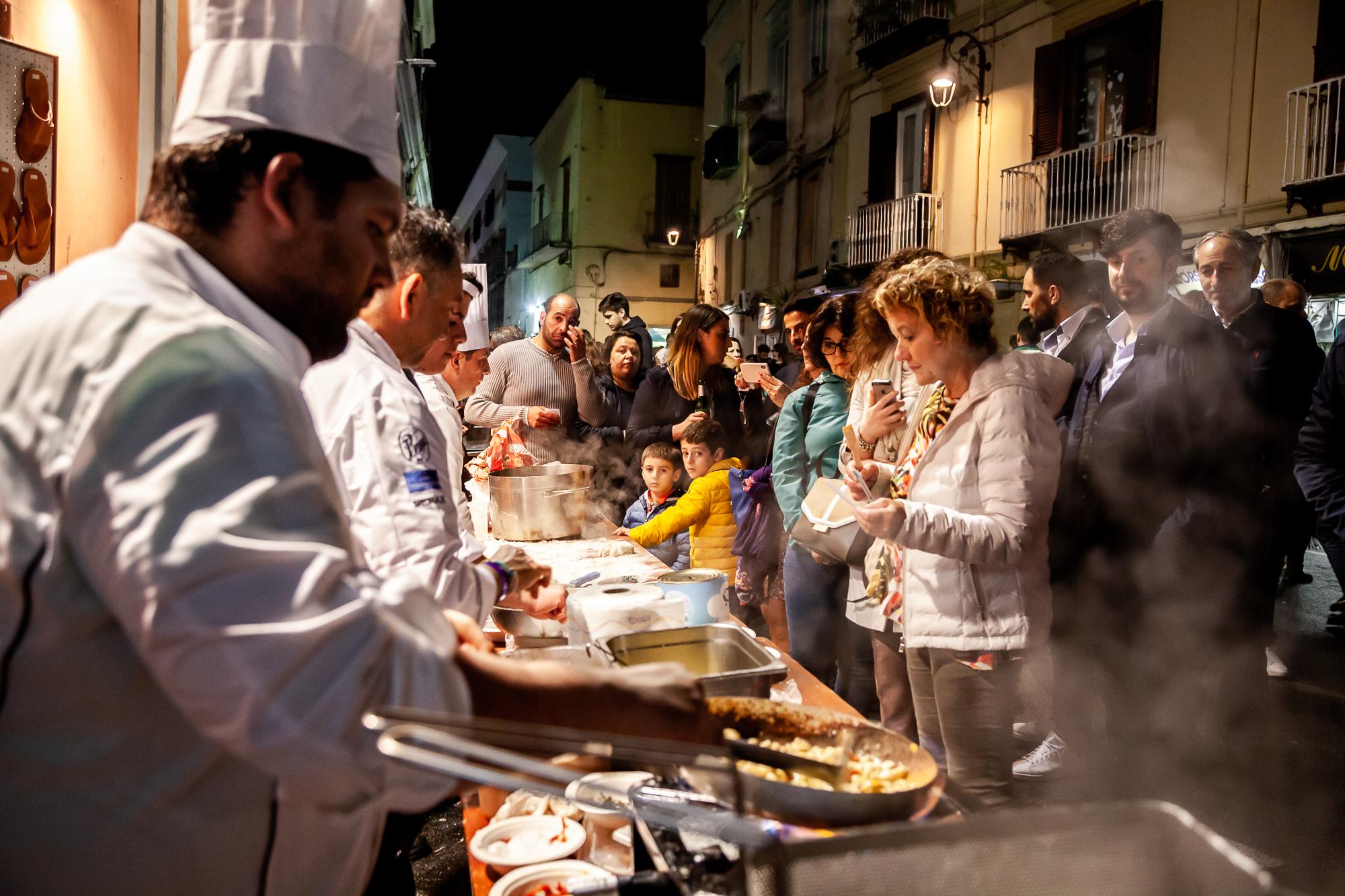
I’m in a shoe shop, one that sells elegant stilettos and strappy platforms, and a young chef from Naples hands me a soft black taco filled with marinated red prawns, Campari gel, endives and truffle. Think that’s strange? Next door in the bank, a chef from Bibborna quietly deep fries sesame-coated anchovy balls, then serves me two with tomato and rosemary cream.
Around the street corner, I’ve just watched another chef dust tomato powder on hunks of rich, battered pulled pork at a table on the pavement. He plates them up with iodine-rich volcanic tomatoes that make you never want to think about the supermarket kind again.
Where am I? Take a guess – there are groves of knobbly lemons, pastel villas, Fiat 500s on looping coastal roads and knuckled green mountains. There’s even a CGI Audrey Hepburn eating a Galaxy bar.
It’s the Amalfi coast, duh. Novelists, tourists and Gwyneth Paltrows have long been drawn to the charms of this stretch of southwest Italy. But step outside the most popular towns and cities – Sorrento, Amalfi, Ravello, Salerno, Positano – and you can find gastronomic thrills that have somehow remained a secret to the wider world.
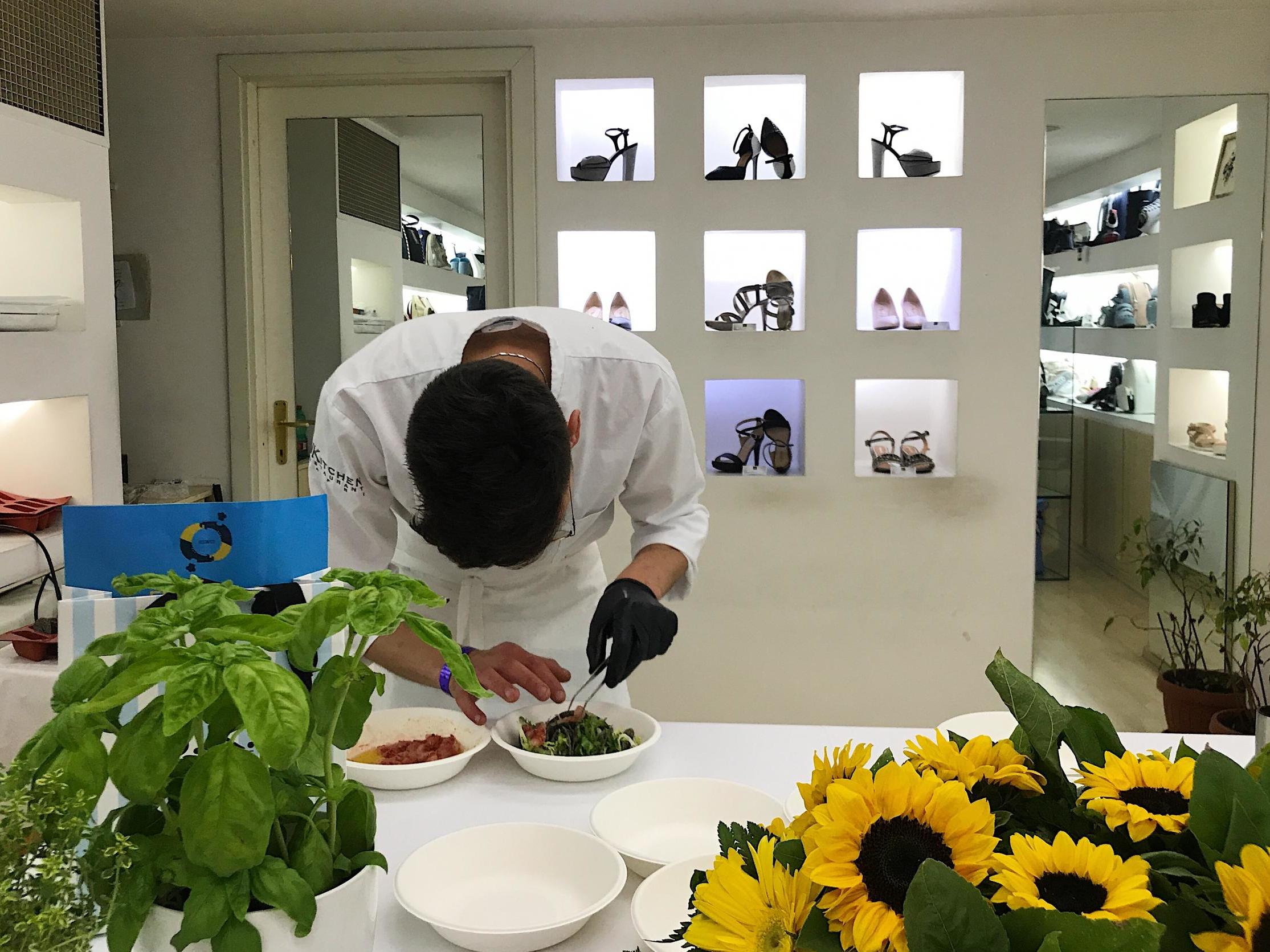
One such secret is no small affair. Ten thousand Italians gather every June in the tiny town of Vico Equense to stretch out their waistbands at Festa a Vico, a three-day festival filled with dish after dish of artisan ingredients. It’s here where 200 chefs from top restaurants set up shop – quite literally – for a street feast.
This year, I was invited along. I’ve never been to the Amalfi coast before and what first strikes me is the view of a dusty blue Mount Vesuvius, dipping in and out of the clouds across the Gulf of Naples.
You need the octopus from this exact area – when you travel, you have to eat in this kind of way, because there’s a story inside
But what makes the view more special is that it wasn’t particularly easy for me to get here. I’ve come by bus (actually three buses) from London as part of a promise to myself to stop flying. Travelling slowly through France, via Paris and Lyon and through the Alps, allows me to appreciate the tracts of land I usually fly over... there’s also a fair amount of Netflix.
But I’m mostly cutting out flying for environmental reasons – the emissions from just a few flights can easily double your annual carbon footprint.
If you’re thinking that I’m crazy, well, I’m not the only one. Flygskam is the hot new Swedish word you’ll have to become familiar with. It means flight shame – not quite so quaint as hygge – and represents a growing movement of travellers who are disavowing planes.
“This no-fly community may be small, but it’s having a big impact on consumer choices,” says Megan Carnegie, of behavioural insights firm Canvas8. She adds that one in 10 European tourists now consider eco-friendliness when booking their holidays and searches for “zero waste travel” on Pinterest increased by 74 per cent last year.
Canvas8 research has also shown that a fifth of Britons would be willing to avoid flying to reduce their environmental impact. It’s time we made living lightly a mainstream aspiration – how else will we tackle the climate crisis?
And this isn’t just about transport. “Slow travel” means absorbing the local culture of your destination – and eating locally. And in Italy, that’s more hedonistic than a lifetime of BA bloody marys.
After 36 hours on a bus, I’m ready to eat. The first event of Festa a Vico, the Republic of Food, is the biggest night. The novelty of chefs in shops doesn’t get old. It speaks to the chaotic, generous charm of south Italy that the town’s tradespeople are happy to let chefs blowtorch mackerel in their shops at 9pm. By the light of one store that appears to sell only blue tops for women, three men hand out beautiful salt cod sfogliatelle.
The best thing about these painstakingly layered Neapolitan pastries is ruining someone’s hard work with a single bite. They’re crispy on the outside and soft in the middle, and make a cascading crackle as you eat them – bliss.
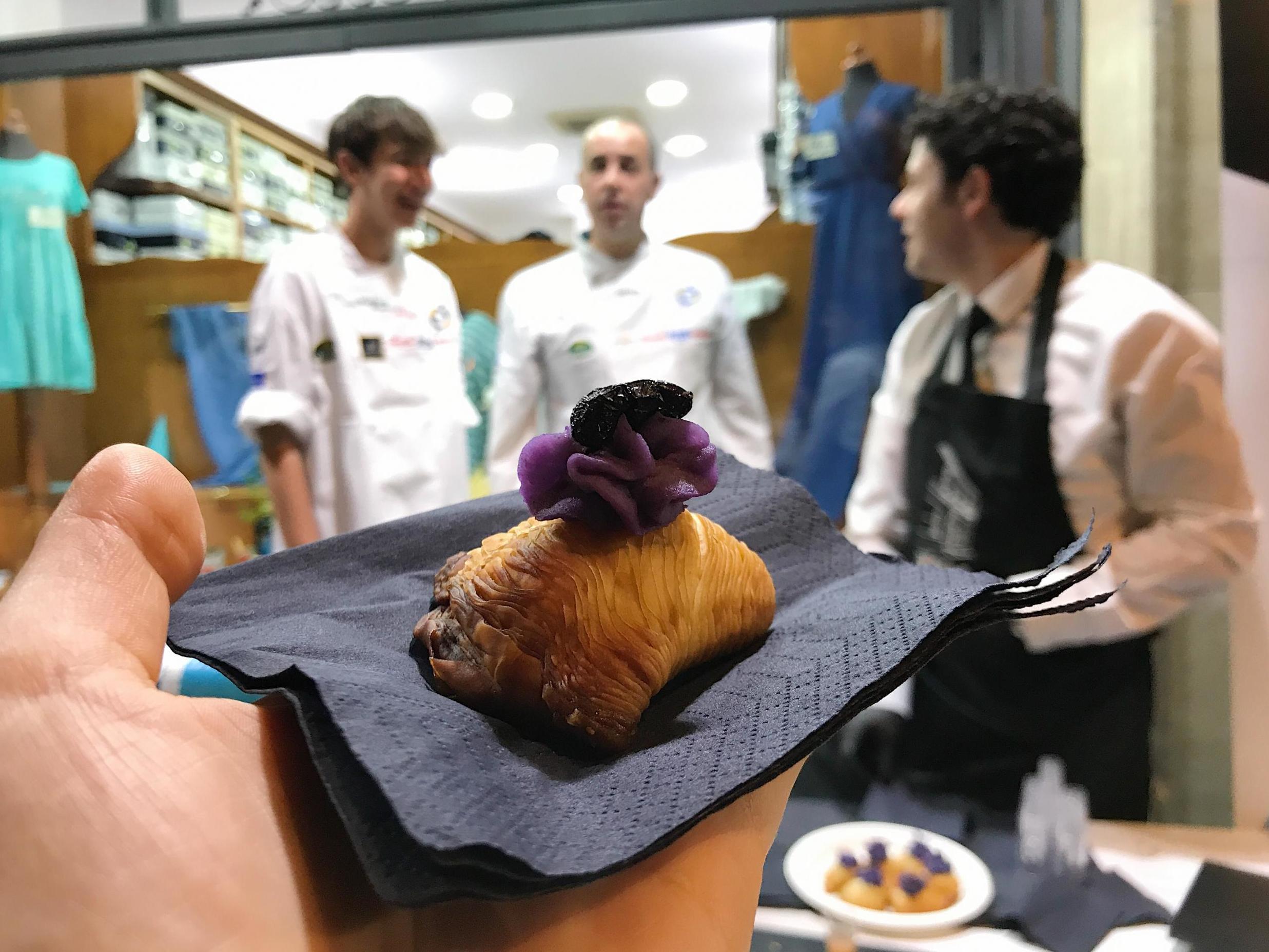
It’s €22 (£20) for four dishes and two drinks. I think I could easily eat and drink double that, but then I was probably tempted here because of my insatiable greed and nine stomachs. The festival traffic into the town is a little crazy, by the way – the Italians tend to come by car. For tourists, it would be best to come by local train or stay somewhere in the centre.
The next evening is an expensive charity dinner, which somehow is even more frenzied than a feast of 10,000 people. It costs €330 for a ticket but is sold out because there are – wait for it – 26 courses from Michelin-starred chefs, including Giorgio Locatelli.
They are all expected to serve something modern but traditional, reflecting their region of Italy. The nine aperitivi and 10 dessert courses are served buffet-style, meaning you don’t have to get round them all, or could ostensibly have more than one if you loved it. The dress code is smart though, not muumuu.
In Italy, there is something of a blossoming love affair with the minimalism of Japanese food – one of the aperitivi is a clean dish of raw cold wobbly roe, with gelatinous slices of veal head and a foamy white cube of aubergine flesh. It’s a lesson in texture above all else and it definitely wasn’t for me.
This Japanese influence is surprising at first – in a country that’s famous for stubborn loyalty to its own cuisine. But it makes sense if you consider that both nations have a fierce love of simple, local ingredients. Both also have long coastlines with glorious seafood. The hot gossip in Vico concerns the arrival of a Japanese chef in the beach restaurant Il Bikini, and how she will evolve the Italian menu.
The two main courses at the gala dinner – trout with melon and passion fruit, and pork with anchovy liquor – don’t arrive until gone midnight. By this time, the guests are absorbed in so much wine and commotion, no one’s noticed. I eat several desserts, and I wish I could tell you about them, but sadly (actually happily) they’re archived in a corrupted file in my brain.
Pasquale is the chef at Al Convento, who will serve you up a whole terrifying basilisk of cod
The third night is a smaller street feast in a marina, and includes a “dessert storm” with 50 dishes to choose from – ending this festive dolce vita under the spell of Vesuvius. The point of this tucked-away festival, as well as raising over €200,000 for several charities, is to celebrate artisan ingredients cooked by top chefs. In Britain, we have a growing number of excellent food festivals, but many of them put the spotlight on one or two celebrity chefs performing on a stage – for people to watch.
At Festa a Vico, a total of 400 chefs pay their own way to cook for all the visitors. Having been set up 18 years ago, the event is now the master prototype for other chef-led festivals across Italy. I wonder if we will ever learn enough from our gastro-neighbours to start adoring regional British food cooked brilliantly by chefs in informal settings.
The festival’s creator, Gennaro Esposito, explains: “This year, we have chefs from nearly every region. They don’t take money to come, we just give accommodation, ticket and a little fee for the produce.”
Gennaro is the king of Festa a Vico, and loves stories behind ingredients. He runs the two-Michelin star restaurant Torre del Saracino in Vico, serving a sparkling sea-meets-earth menu overlooking the Gulf of Naples.
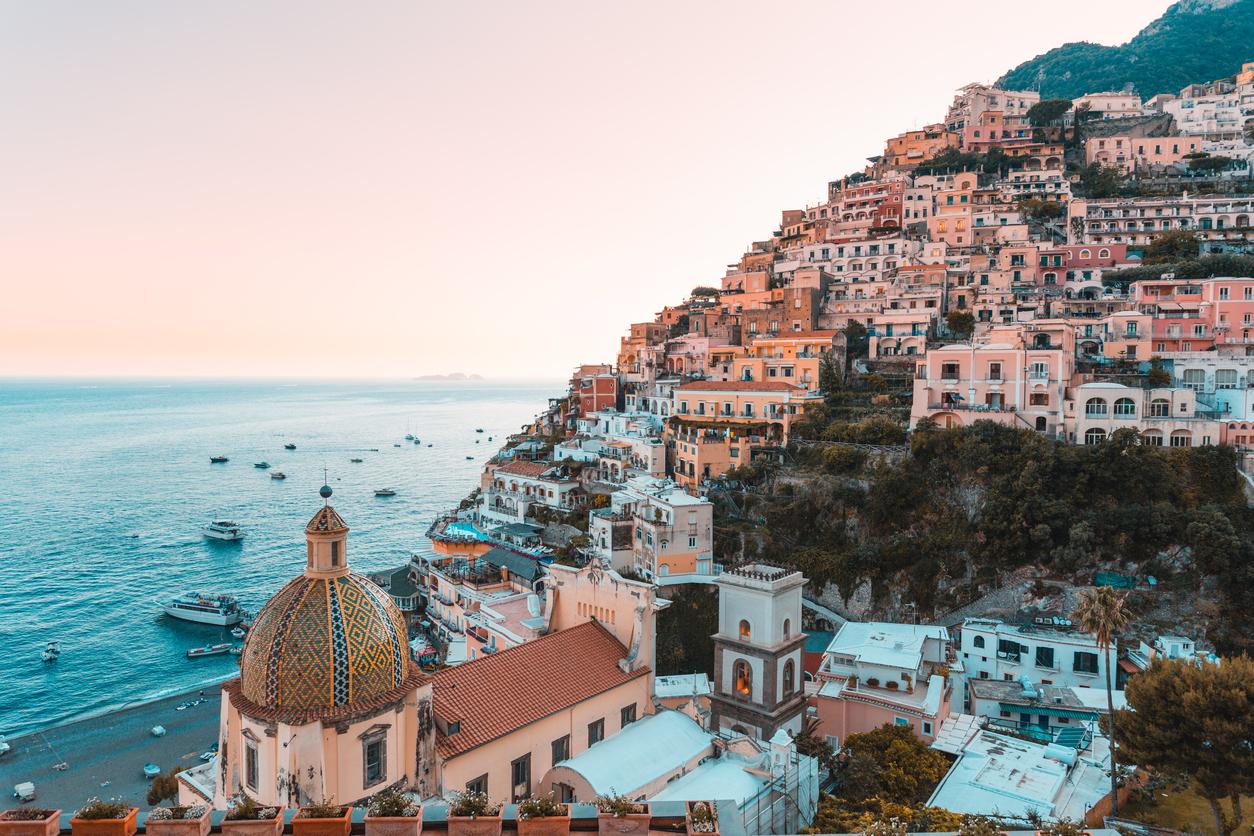
One of his dishes is tender baby octopus alla Luciana – a Neapolitan speciality where it’s cooked in a terracotta pot. Gennaro’s version, following the instructions of “an old woman, the wife of a fisherman”, is worth hunting down.
He shares his secret, explaining: “You catch the little octopus; you have to clean it without fresh water. But you have a problem – you have to clean out the jelly from around the octopus. So we put it between some towels for one and a half to two days, and then we change the towel. At the end, we have the octopus concentrated.
“We put a little bit of tomato and chilli inside it, pepper, oregano, one or two drops of vinegar, and one sprig of parsley. We close the head and we put it in a terracotta pot and we cook it for just 50 minutes, that’s all. The colour of the juice is violet. Usually when you do the octopus alla Luciana, it’s brown.”
1,300
Years since colatura, anchovy liquor, was first made in Italy
He adds: “You need the octopus from this exact area – when you travel, you have to eat in this kind of way, because there’s a story inside. And the story is not just fashion, it’s not just romantic. It’s technique, but technique that is at the service of the flavour.”
This philosophy is why Gennaro set up Festa a Vico 18 years ago. “The artisan was always in the heart of Festa a Vico – also the producer and especially the chef,” he says. He set up festival events just for chefs and industry folk, such as one for rising stars to show off a special dish. This year, Enzo di Pasquale makes a bowl of torn beefsteak tomato flesh and cubes of melon, sitting in a summery caciotta cheese broth with marigold oil. It is heart-stoppingly good.
Please, find this man (he cooks at Bistrot 900, in Abruzzo’s Guilianova on the east coast) and eat everything he touches.
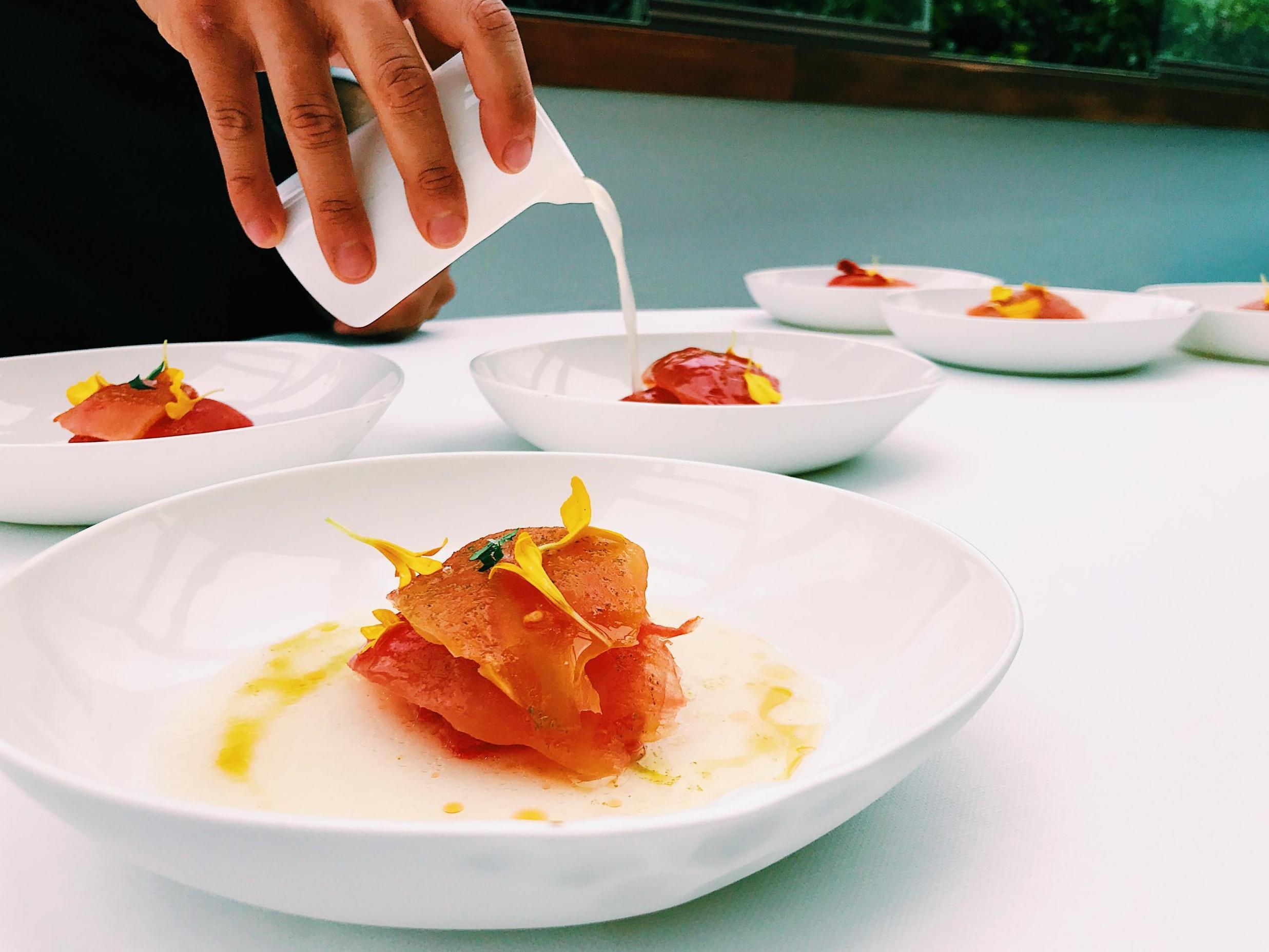
Gennaro’s menu reflects his artisan philosophy: he’s chosen a specific olive oil from Sicily (Lorenzo – buy it), he loves using Amalfi lemons and serves local Campania wines. But one of his prized ingredients steals my heart – colatura. Colatura is a clear, bronze liquid made from the angelic souls of anchovies – it’s not pungent, but delicate. A tablespoon on spaghetti, with just olive oil, garlic and parsley, is holy.
It has been produced in the same way for 1,300 years – first by the Cistercian monks of San Pietro parsonage at Tuczolo, a hill near Amalfi. It’s thought to be related to the sauce the ancient Greeks called “garos”, which the Romans renamed “garum”.
Nowadays it’s made in small factories just along the coast in the fishing village of Cetara, where the smell of anchovies is solid like bricks. In the Nettuno Cetara factory, a mammoth workforce of three staff extracts colatura from salt-crusted barrels of fermented anchovies – in such small quantities that it is hardly found anywhere else.
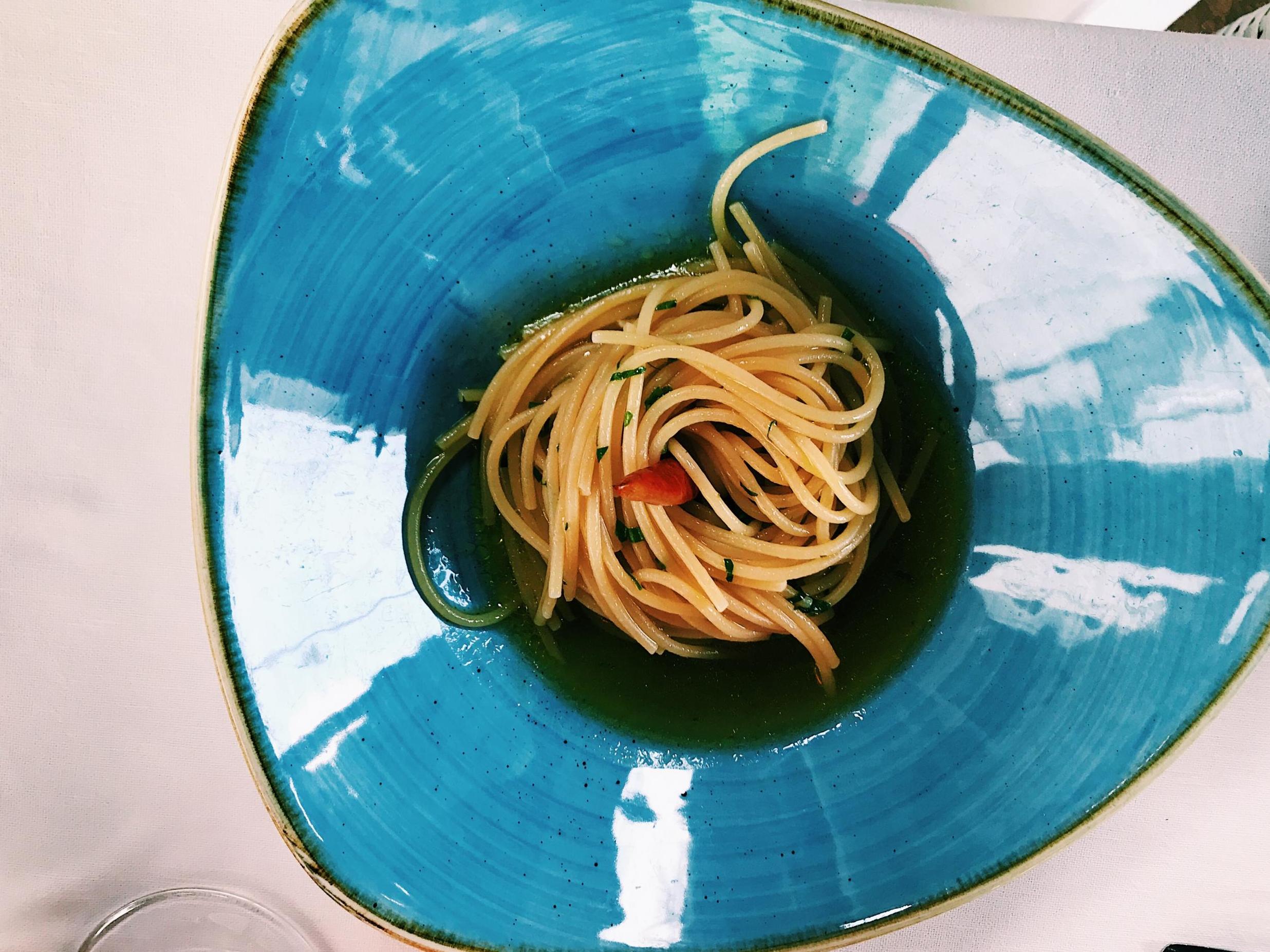
Vincenzo Giordano, whose father set up the Nettuno factory in the Fifties, enthusiastically tells me how colatura is made – and it’s pleasingly simple. Fresh anchovies are filleted and placed in small barrels in layers of alternating directions, with lots of salt. A large stone sits on a wooden cover, then over the next six months to three years, juices rise over the cover. A hole is made at the bottom of the barrel and the harmonic liquor filters through, dripping out.
If you ever get your hands on a bottle, you can drizzle it on fish or meat tartare, vegetables and even pizza.
Vincenzo says any waste from the anchovies is used to make feed for fish farms. I’m pleased that it’s a closed loop system, but I’m still highly sceptical about the environmental costs of all farmed fish.
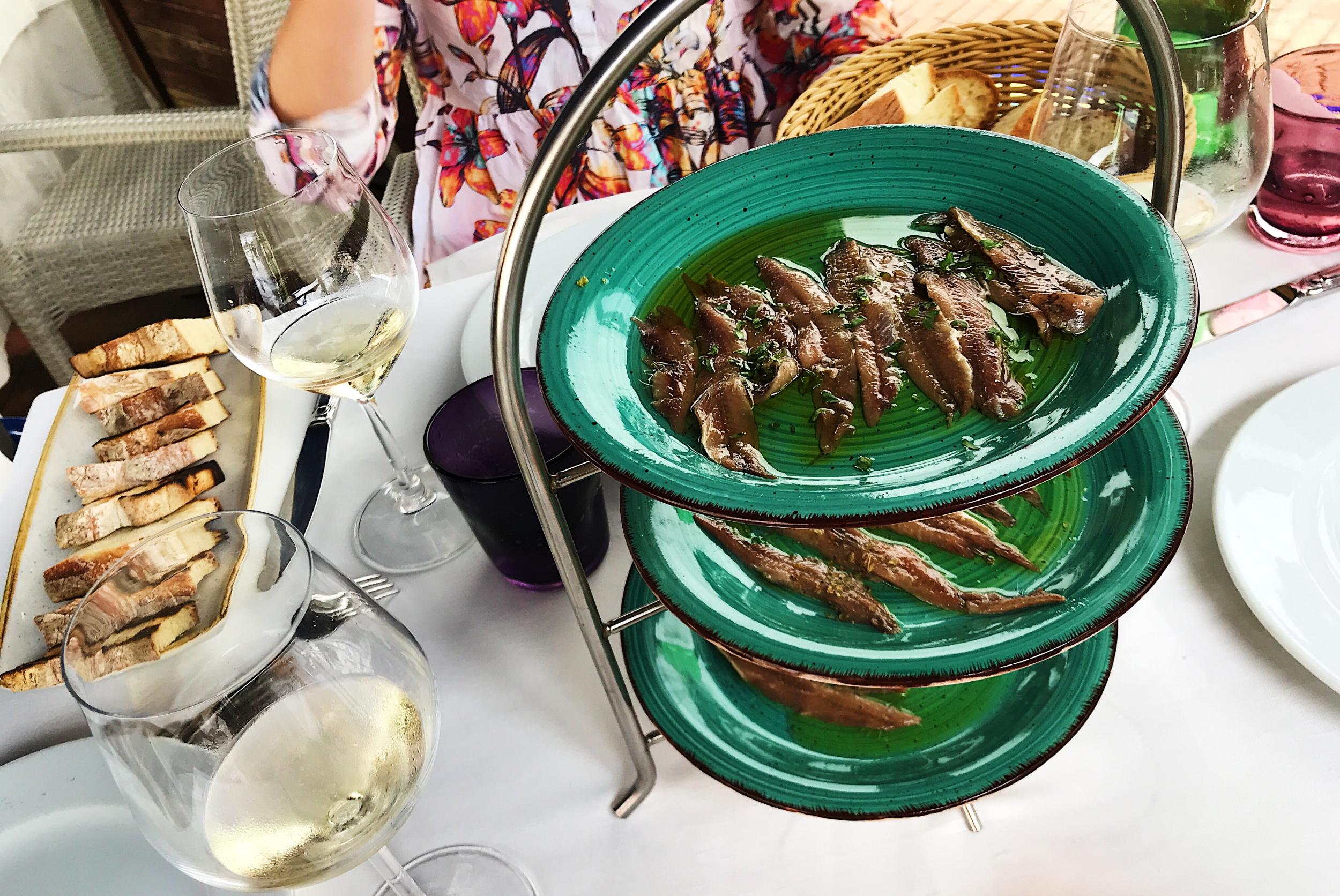
Anchovies, however, aren’t farmed. They’re also not currently overfished in the Mediterranean and swim close to the surface, meaning fishers don’t have to trawl for them.
They’re something special on the Amalfi coast – when fresh, they’re seen as a test for top chefs, Gennaro says, because they have to be cleaned of blood quickly before the fishy smell sets in, then filleted delicately so as not to lose the meat. They shouldn’t taste very strong.
If you do go to Cetara, visit Pasquale – the town’s Spiro Hakiaopulos. Genial and a little mischievous, he’s the chef at Al Convento restaurant, who will serve you a whole terrifying basilisk of cod from a copper pan.
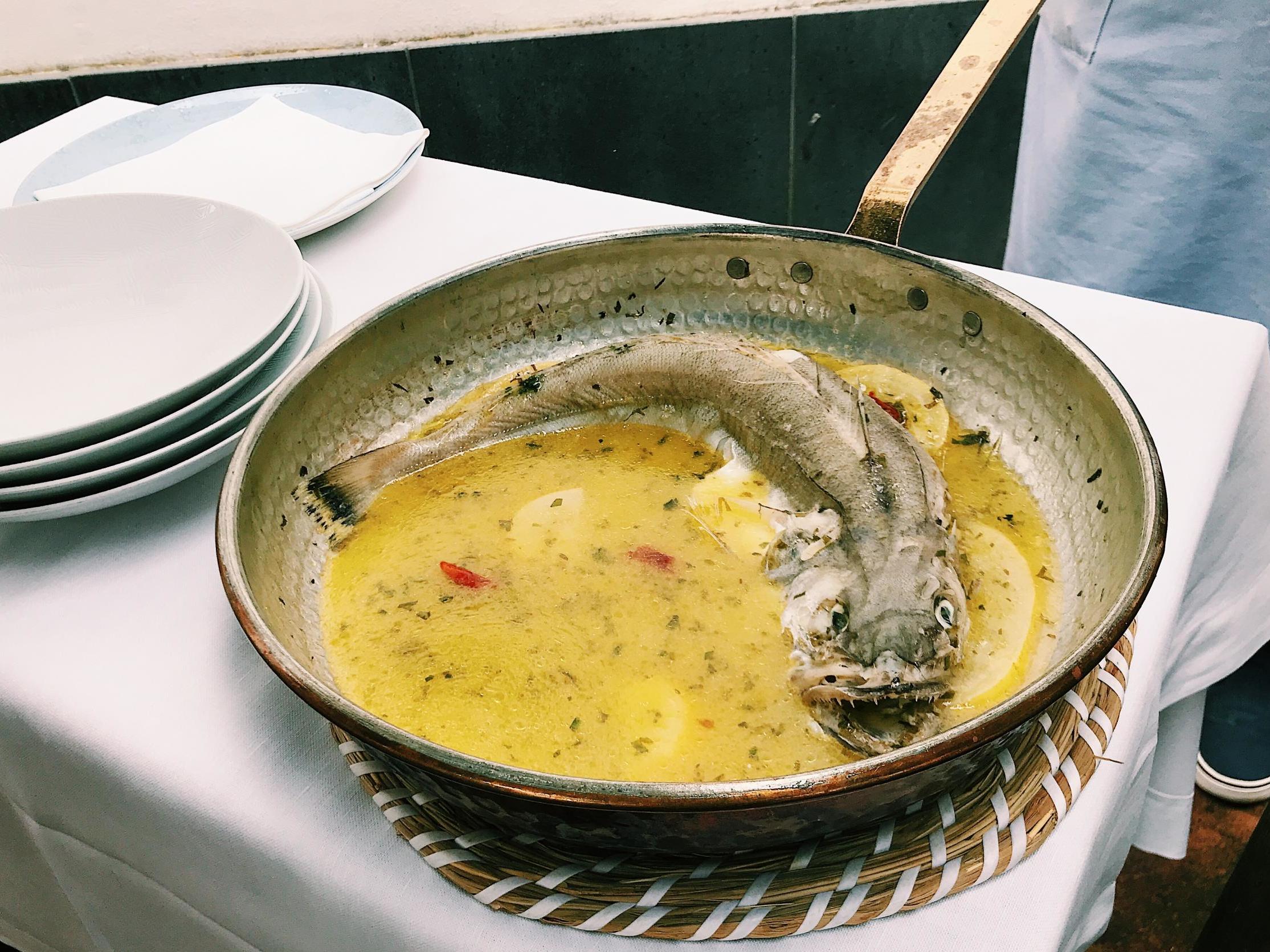
It’s not really scary – it’s beautifully fresh, and drowned in buttery sauce and pieces of sfusato d’Amalfi – the name of the lemons here. A waiter also fillets it for you. After eating spaghetti alla colatura, platters of battered seafood and three plates of anchovies… well I think you’ll like Cetara too.
There is doubtless more food to discover in the lesser trodden parts of the Amalfi coast, such as in the town of Conca dei Marini, where pennette pasta is eaten with shining, fat cherry piennolo tomatoes that are stored in the dark for up to a year, maturing and lapping up the sea air. Costa d’Amalfi, I’ll be back – but by train.
Join our commenting forum
Join thought-provoking conversations, follow other Independent readers and see their replies
Comments